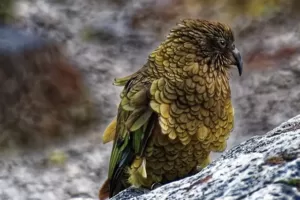There are approximately 387 species of parrots that exist today. Of those, many are at risk of extinction due to habitat loss, illegal trade, poaching, and other human activities. According to the IUCN Red List of Threatened Species, there are 26 endangered species of parrots and 20 species that are classified as critically endangered as of 2023. In this feature, we bring attention to those endangered species.
Quick Navigation
The 15 Most Endangered Parrot Species
Sun Parakeet
Known for their brightly colored yellow feathers and the ability to produce extremely loud vocalizations, sun conures are playful and feisty birds. They originate from a region encompassing parts of northeastern South America, including Brazil, Venezuela, and Guyana.
The Sun parakeet had a steady population and was listed as Least Concern on the IUCN Red List until the year 2008 when it saw a rapid decline. It is currently listed as endangered with population numbers continuing to decrease.
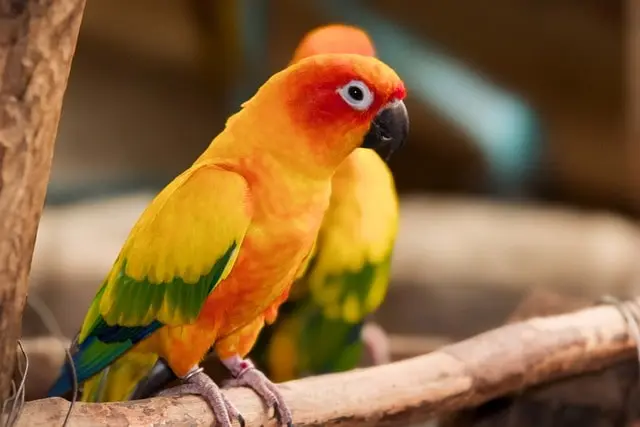
African Grey Parrot
African grey parrots may not be as colorful as some of the other species but their remarkable mimicking abilities and intelligence have made them one of the most popular exotic pets globally. Unfortunately, this very demand has led to the rampant illegal wildlife trade and consequent decline in their populations.
Conservation efforts have been made to address this issue, including regulations to control the international trade of African grey parrots. In 2016, the United Nations banned trade in the African grey parrot. The ban was imposed under the Convention on International Trade in Endangered Species (CITES) to conserve the species. (source)
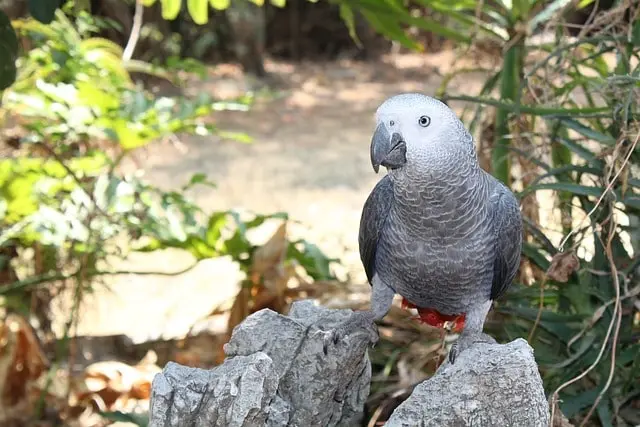
Blue-throated Macaw
Interstingly, the Blue-throated Macaw was thought to be extinct for many years. It was not until 1992 that it was rediscovered in South America. The vibrant and beautiful subspecies of macaws is now on the verge of extinction and has been classified as critically endangered.

Yellow Crested Cockatoo
These parrots were once found in large flocks on the islands of East Timor and Indonesia. However, their high demand as pet birds led to the capture of thousands of birds from their natural habitat. CNN reports, up to 96,000 Yellow Crested Cockatoos were exported between 1981 and 1992. Today, these birds are on the verge of extinction, with only 1,200 to 2,000 mature individuals remaining in the wild.

Yellow-Headed Amazon
The yellow-headed amazons are coveted as pets, which has provided poachers incentive to take them away from the wild. Only an estimated 4,700 mature individuals remain with a continued decline in the population.
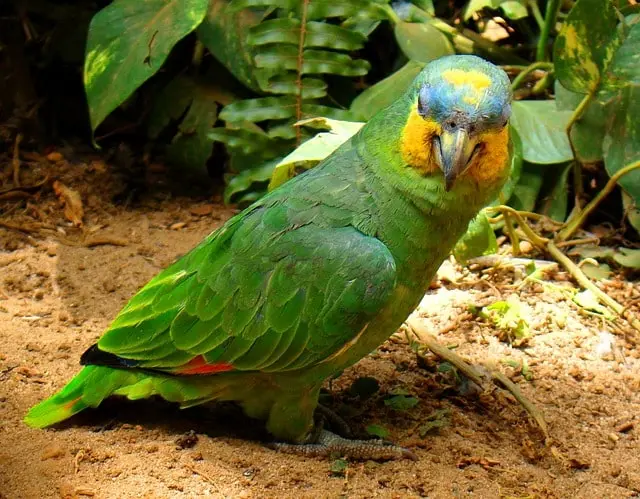
Red-Fronted Macaw
The population of Red-fronted macaws has suffered a decline due to the destruction of their habitat, illegal trade, and persecution by local farmers. As of now, there are roughly 1000 individuals left in the dry Inter-Andean valleys of Bolivia and the species is classified as critically endangered. (Source)
However, several initiatives have been taken to preserve the species including the establishment of the Red-fronted Macaw Reserve, which solves the problems of habitat loss to some extent.
Philippine Cockatoo
This is an incredibly rare subspecies of cockatoos. According to the Beauval Nature Association, the Philippine Cockatoo has been critically endangered since 1994, and only twenty individuals were observed in the wild.
There are several reasons why their population is shrinking, including deforestation, the pet bird trade, tropical storms, and mistreatment by farmers. Efforts to protect the Philippine cockatoo are being made. Rasa Island, which houses a substantial cockatoo population, has been designated as a natural reserve, and extensive reforestation efforts have taken place with the help of local communities.
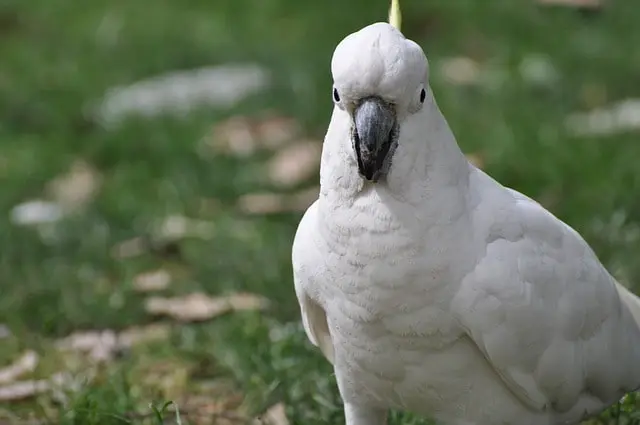
Red And Blue Lory
The Red and blue lory is a rare species native to Indonesia. This subspecies of lorikeets exists in the Indonesian archipelago and primarily eats a diet of fruit and nectar. It is classified as an endangered species and also listed in the CITES Appendix I to prevent commercial trade.
Great Green Macaw
The possibility of seeing these beautiful green birds in the future seems to be increasingly uncertain. The great green macaw is a critically endangered species with only 500-1000 individuals remaining in their natural habitat. Its population is rapidly declining, mainly due to deforestation and poaching of birds to be sold as pets. (Source)
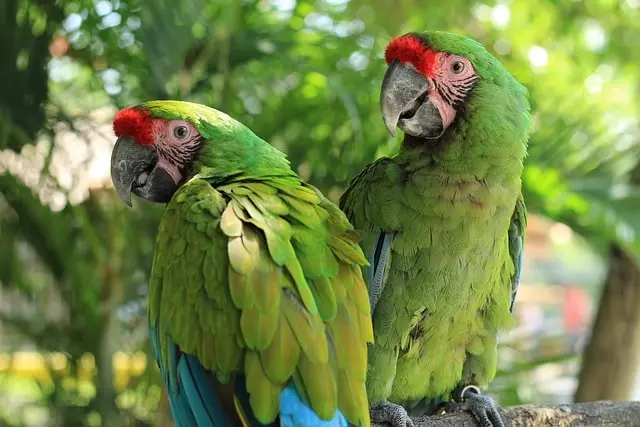
Lear’s Macaw
Strikingly similar, but smaller in size than the Hyacinth macaw, the Lear’s macaw is a Brazilian endemic species. It is one of the rarest parrots in the world and can only be found in eastern Brazil.
These are large, long-tailed, and beautifully colored birds that fly in small groups and usually eat a plant-based diet. Currently, the population of Lear’s macaw is only approximately 1300 adults and is classified as endangered. (Source)
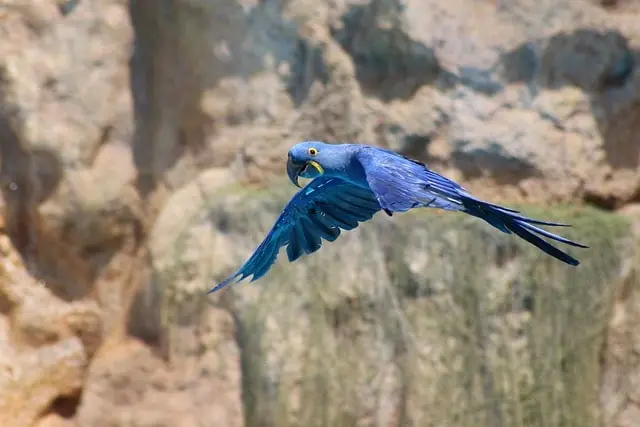
kākāpō
The kākāpō is an unusual species of parrot. Like all parrots, it has the characteristic hooked bill, but interestingly that’s where the similarities end. The kākāpō is a large, flightless nocturnal parrot.
This unique bird is native to New Zealand and is listed as one of the critically endangered parrot species. According to the Department of Conservation, there are only 247 kākāpō alive today. Efforts are being made by scientists and activists to protect this species.
Lilacine Amazon
Widely known for their piercing calls and affectionate personalities, the Lilacine Amazon is one of the most sought-after cage birds. As a result, they are devastated by poaching activities and bird trade around the world. They are also affected by habitat loss due to clearing of forests for charcoal production.
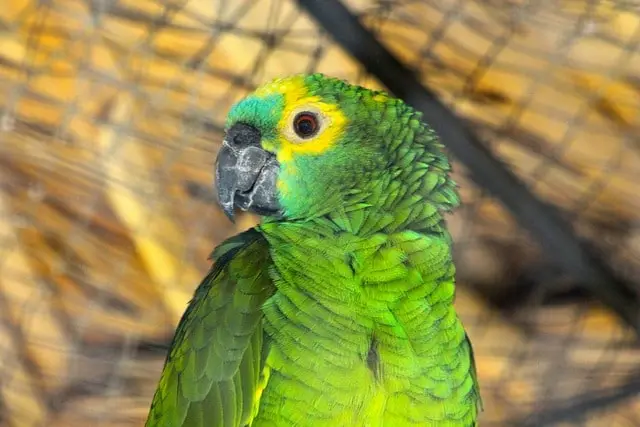
Maroon-Fronted Parrot
Habitat destruction and poaching are two of the primary reasons, these birds are endangered. The maroon-fronted parrot is a large parrot found only in the remote regions of northern Mexico. Its current population size ranges from 1000-2500 adults and is on a decline.
Swift Parrot
Most parrots are non-migratory birds, which means they do not flock to other places when resources are scarce. However, the Swift parrot is one of the three migratory parrots in the world.
The existence of these small parrots faces a major threat from habitat destruction. Along with that, the increased number of deaths is also caused by the introduction of Sugar Gliders in their habitats which invade nests and attack female swift parrots sitting on their eggs. (Source)
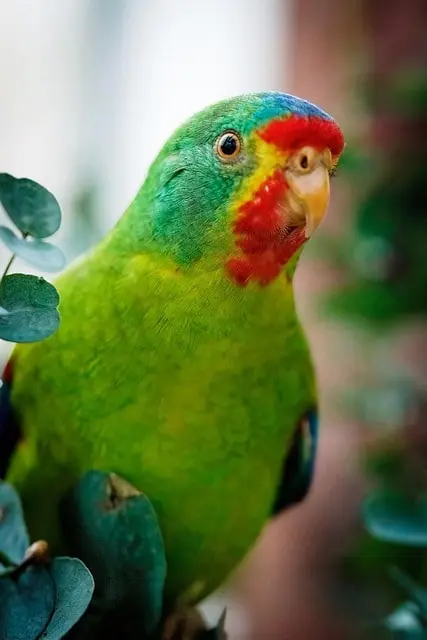
Kea
The kea is another parrot species whose population is threatened by predators. Stoats, Possums, and feral cats are among the primary predators of the kea. This parrot species is native to the Southern Alps of New Zealand and is listed as nationally endangered.

Indigo Winged Parrot
Indigo-winged Parrot, also known as the Fuertes’s Parrot inhabits a small region in the central Andes of Colombia. This exceptionally rare parrot had been largely forgotten until it was rediscovered in 2002. Although conservation strategies have helped improve its numbers to about 300 adults, it still remains close to the brink of extinction. (Source)
